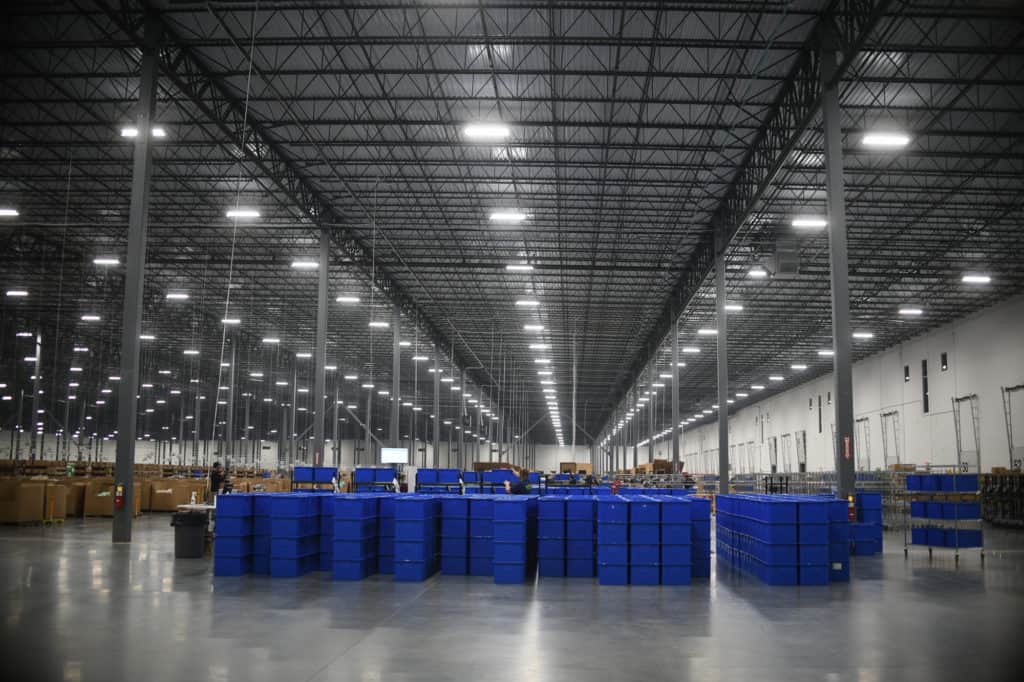In this COVID era, warehouses are among the rare businesses that experienced an increase in demand for employees, making it more important than ever for companies to motivate and retain warehouse employees. The changing business landscape is driving more and more retail sales through e-commerce channels, which puts pressure on warehouses to increase production. To accommodate this, the warehousing and storage industry has added thousands of jobs in recent months. “Employment in transportation and warehousing increased by 78,000 in August. However, the industry has lost 381,000 jobs since reaching an employment peak in January,” according to a September 4, 2020 report from the Bureau of Labor Statistics (BLS). “August gains were widespread among the component industries, with warehousing and storage adding the majority of the jobs (+34,000).”
The demand for warehouse employees is going to be high for the foreseeable future. BLS notes in its report that, “the demand outlook for warehouse space surges alongside coronavirus-related e-commerce sales. Employment in warehousing and storage now exceeds its February level by 14,000.” A June 2020 report published by eMarketer indicates that retail e-commerce sales are expected to reach $709.78 billion in 2020, an increase from $601 billion in 2019, which will increase demand for both e-commerce warehousing space and warehouse workers.

In this context, motivating employees and retaining the best talent is a top priority for warehouses. On average, labor costs constitute 65% of a warehouse’s total operating costs. Wage requirements are also increasing. The average hourly wages for logistics employees rose by more than 16% over the past decade. Fair compensation is one of the biggest factors in motivating and retaining a productive and efficient workforce. If employee turnover rates are high, warehouses are faced with continuously recruiting and training new workers, which takes time and increases overall workforce costs. Additionally, new employees may not be making maximum contributions to production while in training, which can hinder overall warehouse productivity. All of this contributes to the need for warehouses to keep employees motivated and boost employee retention. Below, we’ll discuss a few proven strategies for motivating and retaining warehouse employees.
1. Offer financial incentives
The most obvious way to motivate and retain employees is by offering competitive monetary compensation. One study found that 60% of warehouse and distribution center operators agree that labor recruitment is a top operational challenge. Higher wages can attract more qualified workers, but gainsharing is a strategy that couples increased compensation with higher output. It can be configured in many ways, but in general, the strategy rewards employees with bonuses or other monetary incentives when targets or business objectives are met.
Gainsharing ensures that employees have a stake in the warehouse operation’s success, and they will actively strive for improvement. The key to successful gainsharing is to reward not just output but also customer service, safety, accuracy and quality.
2. Foster ownership and responsibility
Employee retention is challenging in any industry when demand for qualified employees is high. While compensation is a key component of employee motivation, but it’s not the sole driver of morale or retention. Workers also consider respect, status and pride to be motivational factors; they want to be treated as professionals. “Warehouse work is physically demanding and often entails long hours, but employers try to create the best working environments they can by, for example, keeping facilities spotlessly clean, understanding that warehouse workers often regard things like culture and benefits in ways that are markedly different from their white-collar colleagues, and, most commonly, being present on the warehouse floor and looking for opportunities to have personal interactions with workers,” explains Mark Feffer in an article published by the Society for Human Resources Management (SHRM).
This aspect of psychology is even utilized in virtual games in a concept known as gamification. Giving employees ownership and responsibility for some part of the operations fosters a sense of pride and removes the boredom from work, increasing loyalty and boosting job satisfaction.
3. Provide a clear path forward
No one dreams of performing the same monotonous tasks every day for decades until retirement. Employees crave improvement. They want to move up the ladder and not feel as though their careers are stagnant. That’s why it’s imperative for your employees to know what opportunities exist going forward. It helps if potential promotion paths are clearly written with no ambiguity.
Employees must be able to derive actionable insights from potential advancement paths and clearly assess where they currently stand and what changes they need to make to move up the ladder. Tying promotional and advancement opportunities to warehouse KPIs also helps to improve the performance of your warehouse and provides clear and quantitative targets for employees to work towards.
4. Cultivate cohesive teams
Human resources experts have noted for years that often, employees leave managers, not companies. According to Gallup’s State of the American Manager report, “Managers account for at least 70% of the variance in employee engagement scores.” Employees also find it difficult to leave a company where they’re working with people they consider friends rather than colleagues.
That doesn’t mean you have to fly your employees to exotic locations and conduct team-building exercises with expensive coaches. Even providing employees with opportunities to bond over pizza will go a long way. As with any personal relationship, warehouse employees cannot be coerced into becoming friends with colleagues. But warehouse work, by nature, is a team effort, so you should foster cohesive team-building and encourage friendly working relationships for a positive work culture.
5. Offer work shift flexibility
Shift-based work is a given in the warehousing industry. Shift work can cause a strain on employees’ family and social lives, particularly if they’re working shifts at odd times and on weekends when they have the most opportunities to socialize with family and friends.
Considering the impact on work-life balance, providing flexibility in shift changes can be a significant benefit for employees and may even motivate your employees more than monetary rewards can. While accommodating a favorable shift for every employee every time is impossible, be sure your workforce knows that you value their lives outside the workplace and support work-life balance.
6. Provide the right tools: implement collaborative automation solutions
Collaborative robots are increasingly common in warehouse operations, and they offer several benefits to boost employee motivation and morale, which helps to retain warehouse employees. Collaborative mobile robots like Chuck by 6 River Systems are easy to implement and intuitive to operate. For instance, implementing 6 River Systems’ solution enabled one leading 3PL to navigate the labor market more effectively by eliminating distribution center experience requirements and lessening language barriers. Additionally, the company reduced the time to achieve performance objectives by 90% by minimizing the time new hires spent learning processes and tools and getting to know the warehouse floor/map.
Chuck leverages machine learning and AI to optimize pick routes and prioritize work in real-time based on the current conditions on the warehouse floor, eliminating unnecessary walking. Navigating to each pick location autonomously and eliminating the need for associates to push and pull manual order picking carts, Chuck helps to reduce physical strain and fatigue, which in turn enhances safety. Chuck also guides associates through each task, reducing order picking errors and improving overall efficiency, which helps to boost employee morale. Collaborative robots like Chuck by 6 River Systems have a proven track record of increasing productivity and employee retention.
Learn more about how collaborative mobile robots can improve warehouse safety and productivity by downloading our white paper, 7 Reasons Why Warehouse Robots Beat Traditional Automation.


